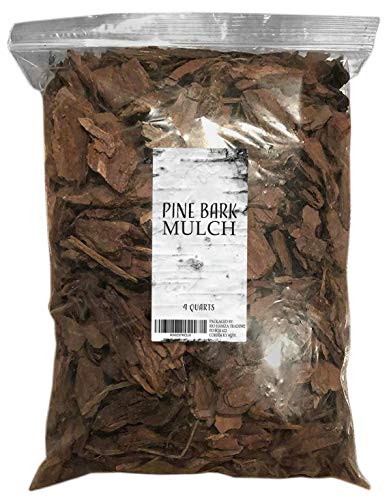Fern varieties are plentiful, and these lush plants invigorate our homes and gardens with airy, billowing foliage or dense, bushy fronds. With minimal care, ferns thrive given the right growing conditions. If you want to incorporate ferns into your home or garden, you are probably wondering if ferns need drainage. We’ve researched to find the answer for you.
Ferns grow best in well-draining, aerated soil. A soil mixture of equal parts sand, potting soil, and peat moss is ideal. Plant potted ferns in a container that allows drainage either via a hole or a layer of rocks at the bottom.
![Closeup of large fern hanging on in a garden, Do Ferns Need Drainage? [And how much should you water them]](https://gardentabs.com/wp-content/uploads/2020/08/Do-Ferns-Need-Drainage-.jpg)
Keep reading, and we’ll discuss how to keep ferns moist while providing adequate drainage so that you can be sure to provide the right growing conditions. Whether you are potting ferns indoors or planting ferns outdoors, these lush, hardy plants will enrich your home and garden.
How Much Water Does a Fern Need?
Water is vital to healthy ferns. Not only do ferns thrive in moist soil, but they also prefer a humid climate. Expect to water ferns heavily, no matter the variety. Your watering routine will vary depending on the soil type, so water daily or weekly as needed.
Always check the soil before watering. Soil should be moist, but not wet. If the soil is dry so that you observe crumbling, lighter in color, or cracking, it is time to water your ferns.
How to Retain Moisture
Potted ferns need watering less frequently if planted in wooden, woven, or clay containers rather than plastic containers. Planters made from porous materials promote moisture and air to move throughout the soil, whereas plastic containers do not.
Click here to find this on Amazon.
Adding a thick layer of mulch (1-2 inches) beneath ferns planted outdoors will help the soil to retain moisture between waterings. Using pine bark, pine needles, or coarse compost will also prevent weeds, and provide nutrients to the soil.
Click here to find this on Amazon.
How To Increase Humidity
Ferns prefer 70% relative humidity. Check out these tips on how to increase humidity, particularly if growing ferns either indoors or outdoors in planters:
- Set potted ferns atop a saucer or tray lined with gravel and water.
- Mist the fern’s fronds daily.
- Double-pot the fern by setting the planter that contains the fern into a larger, decorative container and use peat (or sphagnum) moss to line between the two planters. Keep the moss moist.
- Put a humidifier in the vicinity of the fern.
- Arrange potted ferns nearby.
Check out our blog, “7 Hanging Plants That Grow Well in the Bathroom,” to learn more about houseplants that prefer high humidity.
Can You Overwater a Fern?
Because ferns prefer moist soil, it is possible to overwater. Always check the soil just before watering; it should be damp or slightly dry, but not wet. You might observe the leaves turning yellow, shedding, or wilting if the fern has too much water.
Overwatering can lead to root rot, so err on the side of slightly drier soil between waterings and continue to maintain a humid climate for ferns.
Can I Use a Self-Watering Pot for Ferns?
Self-watering pots prove a helpful gardening tool, especially for indoor plants, if you are apt to skip waterings. These pots contain a reservoir of water with a drainage hole for overflow in the base of the pot. The roots of the plant and surrounding soil can slowly soak up water from the reservoir, without the plant’s roots sitting in water.
Most self-watering pots have a water gauge, or visible reservoir so that you can refill the container as needed; generally refill every 2-weeks.
Click here to find this on Amazon.
Can Ferns Sit in Water?
Ferns should not be kept in standing water because this will make their shallow, fibrous root system prone to disease and rot. If your potted ferns have a saucer or tray beneath for drainage, make sure to dump out the water to keep the tray nearly dry between waterings. Outdoor ferns grow best when planted in permeable soil that does not become easily waterlogged.
Do All Plants Need Drainage?
Regardless of the amount of water needed by differing plant varieties, all plants need drainage to thrive. Plants do not like to sit in standing water (the exception, of course, are some aquatic plant varieties).
Draining water through permeable soil enables air to reach the roots of the plant. Aeration prevents root rot, disease, or mineral build-up from infiltrating the plant, any of which would ultimately lead to death. Well-draining soil mixes and planters enable the plant to get a healthy exchange of carbon dioxide and nutrients to grow.
Some plants can survive in soaked soil, although the conditions are not ideal. Check out our blog, “4 Houseplants That Don’t Need Drainage [& How to Grow Any Plant With No Drainage].”
Should You Put Rocks at the Bottom of a Fern Planter?
If your planter does not have a drainage hole, it is a good idea to line the bottom of the planter with a layer of rocks or gravel. This rocky bottom will allow excess water to drain from the soil, away from the roots of the fern.
Layer rocks approximately 1-inch thick at the bottom of the planter. You can also stack broken pieces of ceramic at the bottom of a planter, a great way to repurpose chipped or cracked pots.
Final Thoughts
Ferns are easy to please, with most varieties growing in woodland, swampland, and even arid climates. Most fern varieties prefer well-draining, moist soil conditions in a humid atmosphere. Drainage should be provided for ferns to thrive either planted outdoors or potted indoors.



